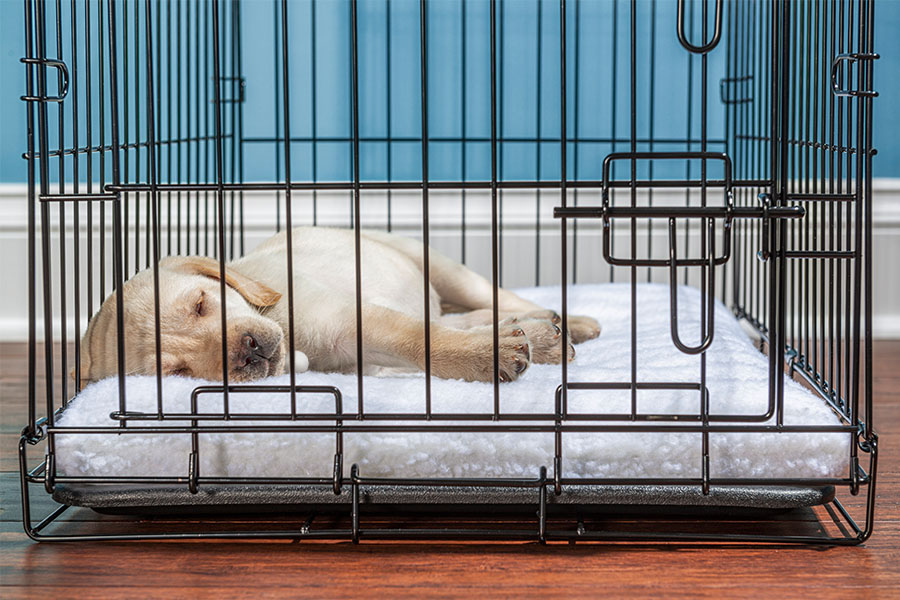Tips
Crate Training Tips for Dogs with Panic Attacks: Building Trust, One Step at a Time

Crate training is one of the most effective tools for building structure, safety, and peace of mind for both dogs and their owners. But when you’re working with dogs with panic attacks, crate training becomes more delicate and complex. These dogs often struggle with anxiety, fear of confinement, and a heightened sense of vulnerability. For them, the crate is not just a neutral space—it can feel like a source of stress unless introduced with care and patience.
In this article, we’ll explore practical and compassionate crate training tips specifically designed for anxious dogs. Whether your pet has mild anxiety or full-blown panic attacks, the right approach can turn the dog crate into a secure, calming retreat instead of a feared space.
Understanding Panic in Dogs
Before diving into training techniques, it’s important to understand how panic attacks in dogs manifest. Unlike general nervousness, panic attacks involve intense, sometimes irrational fear. Your dog may:
- Try to escape from confined spaces
- Pant excessively or drool
- Bark or whine continuously
- Tremble or freeze
- Scratch or bite at the crate’s door
- Refuse to eat even favorite treats
These behaviors can be triggered by past trauma, separation anxiety, or even lack of crate exposure during early development. For dogs with these sensitivities, standard crate training methods may not be effective—and could even backfire if applied too forcefully.
Choosing the Right Dog Crate
Not all crates are created equal, and for anxious dogs, selecting the right crate is essential. It should feel secure, non-threatening, and physically safe.
Here’s what to look for:
- Sturdy structure: Dogs with panic attacks may attempt to escape by biting or pawing at the crate. A strong, chew-resistant crate prevents injury and withstands this pressure. Durable options like aluminum or heavy-duty plastic work well.
- Ventilation and visibility: Some dogs feel more at ease being able to see their surroundings, while others calm down in a more enclosed environment. Choose a crate based on your dog’s preference—start with one that has adjustable covers or panels to find the right balance.
- Comfort: A soft pad or familiar-smelling blanket can provide reassurance. Avoid cluttering the crate with too many items; simplicity and familiarity are key.
- Quiet entry and exit: Choose a crate with a smooth-operating door to prevent sudden noises that might trigger your dog’s anxiety.
One reputable option is Impact Dog Crates, known for their high-quality, escape-proof crates that offer a secure and calming environment for anxious pets without making them feel caged in.
Crate Training Tips for Anxious Dogs
Dogs prone to panic require extra patience and positive reinforcement. Follow these expert crate training tips to make the process as gentle and effective as possible:
1. Desensitize Slowly
Start by simply placing the crate in a quiet, familiar area of your home. Leave the door open and allow your dog to explore it freely without pressure. Do not close the door during early exposure.
Reward your dog any time they approach or step inside the crate voluntarily with calm praise or a small treat. The goal is to build curiosity, not fear.
2. Create Positive Associations
Feed your dog near the crate, then gradually move their food bowl just inside the doorway. Eventually, place the food all the way in the crate. Never force your dog inside—allow them to make the decision to enter on their own.
You can also hide treats or safe chew toys inside the crate so your dog begins to associate it with rewards and safety.
3. Keep Training Sessions Short and Calm
Once your dog is comfortable entering the crate, start closing the door for just a few seconds, then open it again. Slowly increase the time the door stays closed, but always stay close by during this stage. Calm exits are just as important as calm entries.
Avoid overwhelming your dog with long periods in the crate too early in the process. If panic signs appear, take a step back in your training timeline.
4. Use Calming Tools
Some dogs benefit from additional calming aids during crate training:
- A pheromone spray or diffuser
- A heartbeat-mimicking plush toy
- Gentle background noise like classical music or a white noise machine
These tools can help reduce stress and make the crate feel like a cozy den.
5. Avoid Punishment or Force
Never use the crate as a form of punishment, especially for dogs prone to panic attacks. This reinforces the crate as a negative experience and can undo all the trust you’ve worked to build.
If your dog refuses to go into the crate, don’t drag or force them. Instead, go back to a stage where they felt comfortable and try again later.
6. Consistency and Routine
Dogs with anxiety thrive on routine. Try to incorporate crate time at the same times each day—after meals, before bed, or during quiet moments. The more predictable crate use becomes, the more secure your dog will feel.
7. Recognize and Respect Limits
Every dog has a different tolerance for confinement. While some anxious dogs eventually love their crate, others may never feel completely at ease inside. If, despite slow and gentle training, your dog continues to panic, consider alternatives such as gated areas or larger pen enclosures.
The goal is always to reduce stress and improve your dog’s well-being—not force them into something that worsens their condition.
Final Thoughts
Crate training an anxious dog can feel like an uphill battle, but with empathy, patience, and the right approach, it’s entirely possible to create a safe, peaceful experience. By following compassionate crate training tips and focusing on slow, positive progress, even dogs with panic attacks can learn to see their dog crate as a space of safety rather than fear.
With the right training and the right crate—preferably one designed with anxious dogs in mind—you’re not just teaching your dog to tolerate the crate. You’re giving them a consistent, reassuring place to retreat and relax, no matter what the world throws their way.




